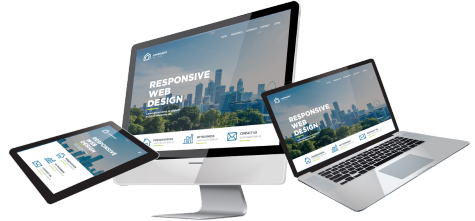Map Search Results Now Down to Three
When searching for local businesses and services, the map pack—that first section of search results that has a box around it and lands at the top of the page with a map location pinpoint—holds a lot of sway. Websites at the top of the search engine results page (SERP) see a higher click through rate (CTR), and that percentage has traditionally gone up even more for a map pack listing. Many things go into drawing in the eye, beginning with that desirable real estate at the top of the page. The pin-points on the map and the box around the results also bring specific attention to those results.
In the last year we have seen the map pack go through many changes. One of which is the number of results shown. It has fluctuated from ten to seven, and now down to three. Of course, this makes getting placed in the maps more difficult, but does it still make it as lucrative?
Desktop VS. Mobile
In addition to having fewer results, the look and style of the map pack has changed a bit as well. Having fewer results has enabled Google to make the 3 results larger and easier to read, especially from the smaller screens of mobile devices.
There is one key difference you will notice when looking at the map pack results from a desktop as opposed to a mobile device. The desktop view has a link to the company’s website as well as a directions link. On mobile devices you will only see a link to call the company. Below is an example of a desktop view for the search term “Locksmith Phoenix.”
Desktop view of the map pack for search term “Locksmith Phoenix.”The reason that last company’s listing does not show a link for directions is because their Google+ page only lists “Phoenix, AZ” as their address. As a side note, this illustrates one of the many reasons why it is so important to have a single Google+ page that includes a complete and accurate company address.
In this desktop view, the searcher has 4 options for interacting with the map pack results: 1. click the website link to go to the company’s homepage; 2. click the directions link to bring up a Google map of that company’s location; 3. click the pinpoint location within the map image for a larger view of the Google maps listing, including 20 map results; 4. click on the company’s name (on the left) to bring up the same larger, 20-listing results page as well as the Google+ reviews page for that company. Also shown are the review stars (for companies with enough reviews to be listed) and hours of operation for the three companies listed in the map pack.
From a desktop, the user can still go to the company’s website for more information about products and services. In contrast, this is where the variation grows larger for the mobile device user.
Below you can see that the mobile user only has the option to call the company from the map pack. There is no link to the website. You can still click on the company name and get to the Google+ page and, from there, click on the company’s website—but this is not immediately obvious. The mobile view of the map pack is great, if the searcher is only looking to call the company directly.
Mobile view of the map pack for search term “Locksmith Phoenix.”Another mobile view option is to click on the name of the company in the map pack to get their Google+ page, like you can in the desktop view. You can also click on the map, though no matter which pinpoint you select, you will get a larger map pack with more results. What you do not get is an option to navigate to the specific company you’ve tried to select. You can re-select that company within the image of the larger map pack and then get an option to navigate to that location.
The Breakdown: What’s It All Mean?
So what does all this mean, and is the map pack still lucrative? For starters, it is now more difficult to land in the map pack. However, for searchers who want more than just a way to call your company, having your website in the organic listing below the map is still valuable. If, say, you want to see what services a locksmith in Phoenix has to offer, you may be more apt to poke around the company’s website than call them directly. People can easily click through an organic listing from their mobile device to get to your website, while it takes several clicks, first going through your Google+ page, to get to your site from the mobile map pack listing.
Though millennials are often tied to their smartphone, they are know for avoiding making actual phone calls. Having your listing in the map pack has its advantages, namely you are singled out at the top of the SERP, however, on mobile devices where the only single-click option is to call the company, that may not necessarily equate to a high conversion rate. Of course, what shows up even higher on the page in both mobile and desktop SERPs are the Search Engine Marketing (SEM) ads.
While the map pack has long been a desirable placement, some recent changes have made it a bit less lucrative—at least on mobile devices. It is always good to have your website come up on the organic SERP listing and it is still advantageous to run a PPC ad.
As always, if you want more information on this topic or how it effects your website, contact us at Effective Web Solutions.


